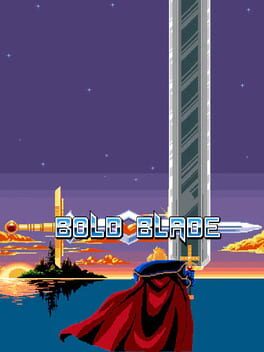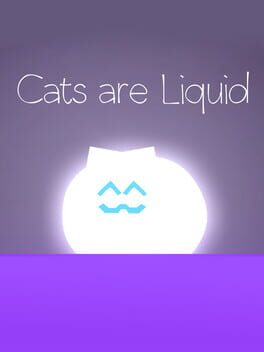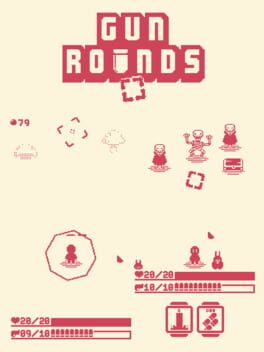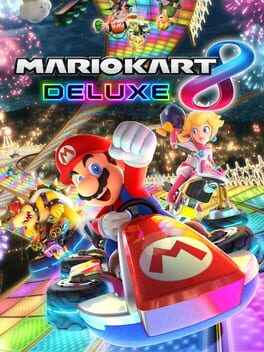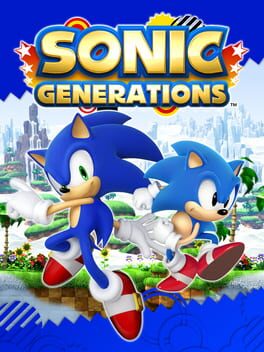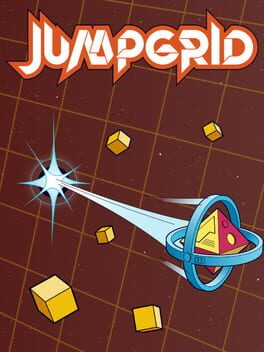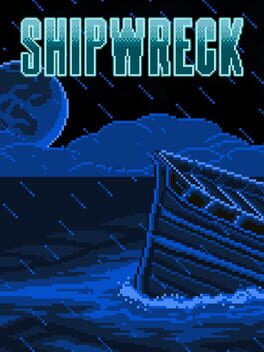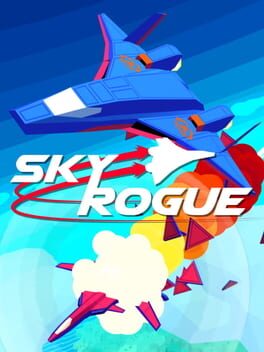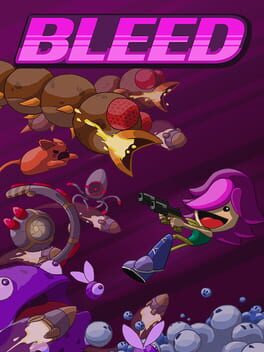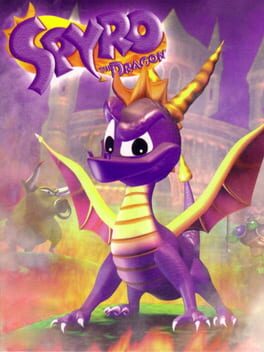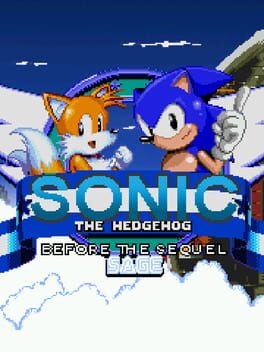mellorine
2018
2001
mode tierlist:
marathon >>> classic = flash > vs. cpu > story > score attack
marathon (endless) is the best thing that ever happened to the series, and i'm surprised future games didn't capitalize on it - except dr. mario world to an extent.
story mode is a cute novelty at first, but going through hard mode without continues for the sake of unlocking vampire wario and metal mario is brutal - and super hard is a joke of a mode that the game doesn't even keep track of score for. don't do it.
marathon >>> classic = flash > vs. cpu > story > score attack
marathon (endless) is the best thing that ever happened to the series, and i'm surprised future games didn't capitalize on it - except dr. mario world to an extent.
story mode is a cute novelty at first, but going through hard mode without continues for the sake of unlocking vampire wario and metal mario is brutal - and super hard is a joke of a mode that the game doesn't even keep track of score for. don't do it.
2020
It was a great experience! You can see some of the growing pains and transitional quirks in the infancy of the genre, but it's an interesting complimentary piece to Super Metroid that no doubt influenced games to come just as much as it.
I think I'll leave it at the Inverted Castle, though. It was an interesting idea, and it's not as horribly executed as it could have been, but I don't think I have much to gain from it.
The music is fantastic, though - and one thing I'll give SotN is how interconnected locations are, and how memorable the overall layout of the castle is.
I think I'll leave it at the Inverted Castle, though. It was an interesting idea, and it's not as horribly executed as it could have been, but I don't think I have much to gain from it.
The music is fantastic, though - and one thing I'll give SotN is how interconnected locations are, and how memorable the overall layout of the castle is.
2017
2009
2011
i loved sonic colors on ds when i was a kid. i should love this game in theory, but... i don't.
maybe it's because i was less spoiled for choice as far as good games go back then? or maybe it's because i'm in a different spot in life, with no desire to bother with the additional missions and whatnot that i'd s-ranked on the ds games.
i feel like the level design is generally really weak, even when compared to the ds games or generations hd. the classic levels feel unfitting given sonic's very noticeably inaccurate physics (they are better than sonic 4, granted, but i think it's only really as good as generations hd), and there's a visibility issue on both modern and classic that i never had in any, any of the other games.
rings are also noticeably sparse and hard to hold onto; i remember frequently having 200 or more rings on colors ds and even generations hd, but here? never, except maybe green hill and casino night. lives become actually scarce... and it doesn't feel for the right reasons.
i imagine the main content of the game is through missions, but honestly, i don't think i need to give this the time of day. maybe i'd give colors that much of my time, but at this point mainly out of nostalgia than anything else, right? seeing a brand new emerald coast in about as much fidelity as the original was charming, but when the game doesn't have enough polish to make it all worth it?
i'll skip. the soundtrack's on youtube, as are playthroughs of the levels. it was a nice curiosity-filler, though.
maybe it's because i was less spoiled for choice as far as good games go back then? or maybe it's because i'm in a different spot in life, with no desire to bother with the additional missions and whatnot that i'd s-ranked on the ds games.
i feel like the level design is generally really weak, even when compared to the ds games or generations hd. the classic levels feel unfitting given sonic's very noticeably inaccurate physics (they are better than sonic 4, granted, but i think it's only really as good as generations hd), and there's a visibility issue on both modern and classic that i never had in any, any of the other games.
rings are also noticeably sparse and hard to hold onto; i remember frequently having 200 or more rings on colors ds and even generations hd, but here? never, except maybe green hill and casino night. lives become actually scarce... and it doesn't feel for the right reasons.
i imagine the main content of the game is through missions, but honestly, i don't think i need to give this the time of day. maybe i'd give colors that much of my time, but at this point mainly out of nostalgia than anything else, right? seeing a brand new emerald coast in about as much fidelity as the original was charming, but when the game doesn't have enough polish to make it all worth it?
i'll skip. the soundtrack's on youtube, as are playthroughs of the levels. it was a nice curiosity-filler, though.
2019
(review might be a little laconic; backloggd glitched my initial review. summarizing from memory...)
JUMPGRID is a fun and addicting idea in theory, but fails to understand the strengths of both the games it draws from as well as its own self.
For this, I need to bring up its description of "bullet hell hyper-Pac-Man"; the second part of this couldn't be any less true. Pac-Man is a solved game that can be completed with a perfect score with some patterns and muscle memory, but this isn't the way it was designed: Pac-Man is a game that always shows players exactly what they need to know - nothing more, nothing less - and lets players not just react, but predict and plan based on that information.
JUMPGRID absolutely fails at this part of game design. It's understandable to an extent, given that its difficulty comes from the stage itself moving and changing form, as opposed to having enemies that move within the stage; but it also prohibits pausing without returning to the title screen, which makes taking your time to path the levels out impossible.
Which leads to trial and error - lots of trial and error.
JUMPGRID starts off great, with the difficulty just so that you can react to all the stages without too much trouble, but reacting at full speed to the later stages is almost impossible - especially when World 4 starts rotating the entire level, and your controls alongside it. This turns the JUMPGRID experience into a matter of dying, dying again until you figure out not only the angle of approach, but also manage to execute it perfectly.
This is also made additionally frustrating with the game speed option: 100%, the default, feels more like a speedrunner's option of max speed than it does an enjoyable first time experience. I can only recommend that later parts of the game be played at around 75% or lower - in fact, I would have preferred it if that was the 100% listed, and if the current 100% exceeded 100, or was designated as a speedrunning mode.
I don't really want to spend the time to find a way to integrate this point into the rest of the review, but I think being at a high graphical resolution also ultimately hurts the game. Hitboxes are overly precise, with literal pixels determining the difference between life or death. This one aspect makes the game even cheaper in my opinion, and makes it demand for more precision than I think it planned to.
JUMPGRID seems to actively choose to make its playing experience more tedious than it has to be - that, or it doesn't understand the considerations it should have made. I'll choose to believe the latter, but either way...
It's no Pac-Man.
JUMPGRID is a fun and addicting idea in theory, but fails to understand the strengths of both the games it draws from as well as its own self.
For this, I need to bring up its description of "bullet hell hyper-Pac-Man"; the second part of this couldn't be any less true. Pac-Man is a solved game that can be completed with a perfect score with some patterns and muscle memory, but this isn't the way it was designed: Pac-Man is a game that always shows players exactly what they need to know - nothing more, nothing less - and lets players not just react, but predict and plan based on that information.
JUMPGRID absolutely fails at this part of game design. It's understandable to an extent, given that its difficulty comes from the stage itself moving and changing form, as opposed to having enemies that move within the stage; but it also prohibits pausing without returning to the title screen, which makes taking your time to path the levels out impossible.
Which leads to trial and error - lots of trial and error.
JUMPGRID starts off great, with the difficulty just so that you can react to all the stages without too much trouble, but reacting at full speed to the later stages is almost impossible - especially when World 4 starts rotating the entire level, and your controls alongside it. This turns the JUMPGRID experience into a matter of dying, dying again until you figure out not only the angle of approach, but also manage to execute it perfectly.
This is also made additionally frustrating with the game speed option: 100%, the default, feels more like a speedrunner's option of max speed than it does an enjoyable first time experience. I can only recommend that later parts of the game be played at around 75% or lower - in fact, I would have preferred it if that was the 100% listed, and if the current 100% exceeded 100, or was designated as a speedrunning mode.
I don't really want to spend the time to find a way to integrate this point into the rest of the review, but I think being at a high graphical resolution also ultimately hurts the game. Hitboxes are overly precise, with literal pixels determining the difference between life or death. This one aspect makes the game even cheaper in my opinion, and makes it demand for more precision than I think it planned to.
JUMPGRID seems to actively choose to make its playing experience more tedious than it has to be - that, or it doesn't understand the considerations it should have made. I'll choose to believe the latter, but either way...
It's no Pac-Man.
2014
2017
2012
1998
Spyro the Dragon's biggest strength appears to be a certain minimalism to its design and kit. It's in stark contrast to the other 1998 collectathon, Banjo-Kazooie: where that game clutters your moveset up with tons of abilities that mostly fail to impact the platforming, Spyro manages to use the glide, charge and flame in interesting ways that often directly impact the platforming experience.
The result is an extremely laser-focused 3D platformer that offers an experience on par with, but stands out against Mario's best moments, yet feels modern and innovative in ways that Crash Bandicoot was too traditional to be.
Where Super Mario 64 strived for sheer mobility and options for fluid, nuanced movement, Spyro goes for geometry, and using that as part of the player's kit as much as the controls themselves.
Picture a ledge that Spyro couldn't reach with his jump: Mario would find a way onto it no matter what, be it through a triple jump into a wall kick, a well-timed turbo nozzle jump, or a cap vault roll chained into a cap bounce.
Spyro would have to explore the rest of the level, examine its geometry and determine the best point to jump off of and glide onto in order to find a way onto this very trivial platform...
But that's what makes it work so well. What would be small distances in the other most acclaimed 3D platformers is so meaningful - Spyro the Dragon achieves more with less, making the most out of its sense of space in a way that feels inherited straight from Sonic the Hedgehog.
Maybe that's why I feel like this was the true contender for Mario's most formidable rival in the late 1990's.
The result is an extremely laser-focused 3D platformer that offers an experience on par with, but stands out against Mario's best moments, yet feels modern and innovative in ways that Crash Bandicoot was too traditional to be.
Where Super Mario 64 strived for sheer mobility and options for fluid, nuanced movement, Spyro goes for geometry, and using that as part of the player's kit as much as the controls themselves.
Picture a ledge that Spyro couldn't reach with his jump: Mario would find a way onto it no matter what, be it through a triple jump into a wall kick, a well-timed turbo nozzle jump, or a cap vault roll chained into a cap bounce.
Spyro would have to explore the rest of the level, examine its geometry and determine the best point to jump off of and glide onto in order to find a way onto this very trivial platform...
But that's what makes it work so well. What would be small distances in the other most acclaimed 3D platformers is so meaningful - Spyro the Dragon achieves more with less, making the most out of its sense of space in a way that feels inherited straight from Sonic the Hedgehog.
Maybe that's why I feel like this was the true contender for Mario's most formidable rival in the late 1990's.
It's still not really New and definitely not Super Mario Bros., but at least it's better than Wii.
The smaller screen resolution and single player design makes for more focused, compact level design; the stages don't rely on party-esque jank as much; hidden paths like in Wii are completely absent, and the coin scoring genuinely adds some interesting metagame functions, like adding importance to not dying, revisiting levels with flying gold blocks and gold flowers to maximize your score... it can get really interesting once you try playing it that way.
I just wish they'd gone all in with this mentality. Many levels simply don't work with this idea (eg: basically every ghost house); the traditional structure of the game doesn't lend itself as well as a more score attack-focused structure like the Pac-Man Championship Edition games might have; and perhaps most crucially, there's no online leaderboards for coin records that I can find.
It's a very interesting idea that could seriously be elaborated on further - but sadly, 2 inherited Wii's half-baked, newbie-training mentality, and gave up all kinds of iteration and elaboration in the process.
The smaller screen resolution and single player design makes for more focused, compact level design; the stages don't rely on party-esque jank as much; hidden paths like in Wii are completely absent, and the coin scoring genuinely adds some interesting metagame functions, like adding importance to not dying, revisiting levels with flying gold blocks and gold flowers to maximize your score... it can get really interesting once you try playing it that way.
I just wish they'd gone all in with this mentality. Many levels simply don't work with this idea (eg: basically every ghost house); the traditional structure of the game doesn't lend itself as well as a more score attack-focused structure like the Pac-Man Championship Edition games might have; and perhaps most crucially, there's no online leaderboards for coin records that I can find.
It's a very interesting idea that could seriously be elaborated on further - but sadly, 2 inherited Wii's half-baked, newbie-training mentality, and gave up all kinds of iteration and elaboration in the process.
